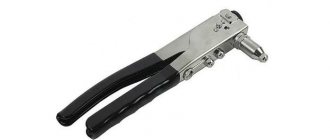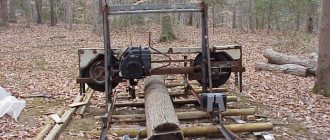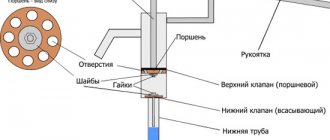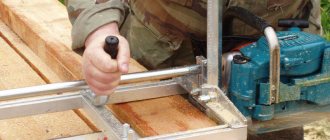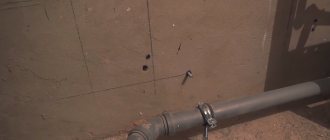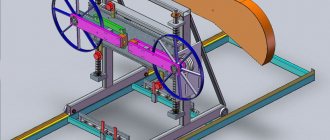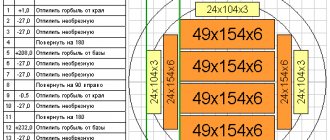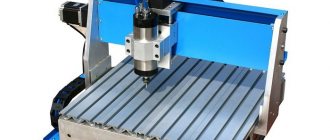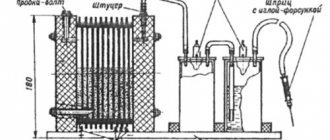In the list of modern woodworking machines, there are several types of machines for cutting logs into boards and beams. The most popular in recent years is rightfully considered to be a band sawmill, in which the main working element is a band saw - a thin strip of metal with pointed teeth, which is welded in the form of an endless strip. The versatility of such machines allows them to be used both as a stationary device and in a mobile version for cutting wood at a felling site in the forest.
Purpose of the band sawmill
The widespread use of band saws is due to a number of factors related to the design of the band sawmill, its technical and operational capabilities. The principle of processing lumber inherent in this equipment allows it to be used to produce almost all types of products from edged boards to timber, sleepers, carriages with a minimum amount of waste and high quality products.
The simplicity of the design and ease of setting up the unit make it possible to produce products of any size. Based on the principle of constant movement of the band saw, this sawmill is capable of working with workpieces of almost any size. In comparison with other types of sawmills, highly qualified workers are not required to operate such equipment; the simplicity of the machine makes it possible for personnel to perform all operations literally after a little instruction and demonstration of basic technological operations.
Depending on the size of the unit, the band sawmill is designed to:
- for sawing logs into the main types of lumber - slab, board, timber, carriage;
- for processing by edge division of beams;
- for obtaining edged and unedged boards;
- for cutting logs into beams, timber, sleepers.
The advantage of this type of equipment is the small number of operations associated with the preparation and movement of wood during the process of dissolving it. Thanks to the thin cutting blade of the band saw, unlike other types of sawmills, this type of equipment can reduce losses in the form of sawdust by 17-21%. Depending on the type of blade, the specifics of sharpening and setting the teeth, a sawmill of this type makes it possible to make the cleanest and most even cut throughout the entire length of the log. The ease of installing the workpiece to be processed on the carriage allows you to take into account the characteristics of the wood, its flaws and defects when working. And the ease of adjustment of the working body allows you to obtain products taking into account the individual requirements of the customer. So, in addition to standard machines with belt equipment, there are devices that have an adjustable width of the working cutting line, which makes it possible to work with large-diameter logs, for example, when the log diameter is more than 1200 mm.
Sawmill and output material
A sawmill is a special machine or set of machines that are designed for woodworking, namely for sawing logs. Using a sawmill you can prepare:
- Bars;
- Boards;
- Gorbyl;
- Sleepers;
- Wood chips;
- Sawdust.
The most common sawmills today are:
- Tape;
- Disk;
- Frame machines;
- Milling canter lines;
- Tire (chain);
- Combined lines.
To find out which sawmill is profitable to buy, we will compare all the advantages and disadvantages of different sawmills.
Design and operating principle
The design of a band sawmill has many similarities with other types of woodworking devices for cutting wood. The principle of a moving saw blade unit incorporated into its design is also implemented in other types of sawmills, for example, in a chain sawmill, where instead of a band saw, a saw chain with a guide bar is used. Just like in frame and disk sawmills, the design has a rail track, only unlike frame and disk sawmills, here a carriage with a working element moves, and not a log that dissolves into lumber.
The main structural components of a classic band sawmill with a horizontal arrangement of the working body are:
- frames with two vertical guides;
- vertical lifting unit of the working body;
- saw frame;
- tension mechanism, drive and driven wheels;
- driving and driven wheels of the sawmill;
- protective casing;
- engine;
- belt or chain transmission of the rotational movement of the electric motor;
- toothed belt holders;
- rail track;
- log clamping device;
- saw roller stops;
- saw wetting devices.
During operation, all these components and parts interact as follows:
- The design is based on rail guides on which the processed log is mounted and along which the frame with the main equipment moves.
- The sawmill frame is the main structural element of the equipment. It is a U-shaped structure that moves along a rail track using roller skis. The saw frame is installed on U-shaped vertical guides. Using a lifting mechanism, it can be raised and lowered to the desired height.
- Raising and lowering the frame is carried out using synchronously working sliders, and fixation at the desired height is carried out using a locking device. Synchronization of the rotation of the sliders is ensured using a chain, the movement of which is provided by a manual or electric drive.
- The driving and driven pulleys of the band saw are mounted on the saw frame. The leader has a drive to the engine by means of a belt or chain drive, and the slave has a movable mount and, with the help of an adjusting device, is able to move, thus tensioning or releasing the saw.
- A device for applying cutting fluid is also located on the saw frame. In the classic version, this is a container with an oil solution with a hose and a dropper, through which the liquid drips drop by drop onto the saw blade, on the one hand reducing the friction force that occurs when the metal touches the wood, and on the other, cooling the metal from overheating.
- The sawmill is controlled using a control unit - depending on the type of engine, the unit provides the required rotation speed of the working shaft. For internal combustion engines, the control panel has shaft rotation speed sensors and a fuel supply adjustment device. The electric motor has an electronic shaft speed control device.
- On the rail guides in the transverse elements there are clamps-clamps that firmly fix the processed section in one position. Depending on the technical specifications, the clamps can secure the log in the position required.
- To move the frame, physical force is mainly used, but for large industrial-class sawmills that are capable of sawing logs with a diameter of 1.2-1.6 meters or more, movement is carried out using an electric drive.
The sawmill works as follows:
- A log is placed on a rail guide, it is oriented according to its structural features and flaws, and then fixed with clamps.
- The required height of the saw blade is set on the bed, according to the markings for cutting the log.
- The engine turns on, the movement is transmitted to the drive pulley, and the saw begins to move. The drip device begins to deliver liquid to the tape.
- After reaching the optimal speed of the saw, the feed of the bed begins.
- The saw cuts into solid wood, making a cut.
- After the saw passes along the entire length of the trunk, the resulting board is removed, and the blade rises above the array by 3-5 mm and the bed returns to its original position.
- After returning, the cutting height is set again and the cutting operation is repeated.
Frame type devices
Frame sawmills are used to perform large volumes of work. Only in this case will the purchase of equipment be profitable.
To install a sawmill, it is necessary to equip a large and strong foundation. These sawmills are professional equipment. To operate and manage them, you must first undergo special training.
The design of a frame sawmill consists of a frame along which cutting discs are attached. With the rotational translational movement of the disks, wood is cut. In addition, the sawmill is equipped with an electric drive. The process of sawing a wooden workpiece takes little time, which is the main advantage of the equipment.
Types of band sawmills
The wood processing device using a toothed belt today has many sizes and purposes. The classification of this type of equipment can be carried out according to several criteria. For example, equipment is most often distinguished by the type of engine used:
- Equipment with an electric motor for a 220 volt household network.
- Equipment operating on an industrial network of 380 volts.
- Gasoline band sawmill.
- Sawmill with diesel engine.
No less interesting qualifications for the purpose of the equipment, depending on the size of the machine itself and the size of the wood being processed:
- Mini sawmill for working with logs with a diameter of up to 50 cm.
- The device is medium-sized - it allows you to cut logs up to 6 meters long and up to 75 cm in diameter.
- An industrial sawmill, the machine of which allows cutting logs with a length of 6 meters and a diameter of 1.2-1.6 meters.
They are also distinguished according to the possibility of using the machine:
- A mobile sawmill that is transported disassembled on a trailer or car. If necessary, it can be installed in any desired location, since it does not require electricity and is powered by a gasoline or diesel engine.
- The stationary model is intended for use in a specially prepared room or site.
Another gradation can be a classification according to the type of saw frame arrangement:
- Equipment with a horizontal blade arrangement.
- Vertical band sawmill.
- Device with variable blade position.
The first type is a conventional design capable of cutting wood in a horizontal plane. Most of these devices are produced by industry; they are also very popular for self-assembly. The second type of equipment is a sawmill, in which the belt is positioned vertically and the wood is cut in a vertical plane, just like in frame devices. The most complex are devices with the ability to change the position of the saw frame.
How not to make a mistake with your choice
There are a large number of types and designs of sawmills produced by both domestic and foreign companies, manufacturers of devices designed for processing wood blanks. From all the variety, it is quite difficult for a simple user to choose exactly the model of a manual sawmill that would be not only easy to operate, but also practical to use.
To simplify the selection process, experts recommend paying attention to the criteria and characteristics inherent in certain machine models.
Type of portal design
The best option is an equipment model for which the manufacturer chose a pipe with a square profile for the manufacture of the portal, and also strengthened it through the use of special elements. You can be sure that such a device has a high level of strength and stability and does not vibrate during operation.
Some manufacturers, in order to reduce the cost of the product, try to use a minimum number of amplifiers. This negatively affects the quality of the result and also shortens the period of use of the machine.
Machine tension unit
The type of tension unit has a direct impact on the service life of the device, as well as on the profitability of its use. During the work operation of sawing a wooden workpiece, it is possible that hard tree bark, knots or a lot of sawdust will get between the cutting element and the pulley.
If the design of the device uses a flexible tension system, the movement of the cutting element is absorbed, the blow is softened, and the saw itself is not damaged. Using a tighter tension will subject the saw to sudden and constant impacts or jolts, causing damage. Even the use of durable materials such as chromium or vanadium to make saws does not save the situation. Changing saws in the process of completing a task will certainly lead to an increase in the cost of the production process.
Carriage movement option
The carriage has quite a significant mass. If chains are used to move it, they will gradually stretch under the influence of heavy weight. As a result, the shape of the final wooden piece will be distorted.
This problem can only be avoided by choosing models whose carriages move using a manual or electric movement system.
Pulley selection
It is not uncommon for equipment pulleys to rupture under heavy loads. The reason lies in the fact that the manufacturers used low-quality material to make the pulley (this could be non-ferrous metal or metal that is susceptible to corrosion). In order to hide visual defects of the pulley, its surface is covered with a layer of paint.
The only correct solution would be to purchase a unit for which a solid metal sheet was used to make the pulley.
You should also not forget about such a criterion as the diameter of the pulley. There is an opinion that as this indicator increases, the service life of the equipment also increases. However, the use of a large diameter pulley in the design only leads to the need to use a longer saw.
Guide rollers
Preference should be given to models whose design is equipped with the largest possible number of adjustment mechanisms located on both vertical and horizontal planes.
In addition, they must be fixed in relation to the direction in which the cutting element moves, at an angle of 30 degrees.
Thanks to this, it will be possible to minimize the number of microscopic cracks that form in the body of the saw mechanism and extend its service life.
Setting up a band sawmill
The correct operation of the device depends on how correctly all the components of this complex device are configured. The first thing you need to start setting up a sawmill is installing a rail base. For normal safe operation, it is necessary to install the sawmill strictly horizontally to prevent the frame from skewing during operation or from breaking the mechanisms for fixing the log on the frame.
It is especially important to install the base of a mobile sawmill horizontally; to facilitate this process, the kit of such a sawmill includes several hydraulic levels showing the position of the equipment parts relative to the horizontal and vertical.
Setting up a band sawmill also involves calibrating and adjusting control devices. When starting work, the feed speed of the saw blade is usually reduced by ¼, this allows the metal of the belt to warm up. After 5-10 minutes of work, the saw tension is checked and if it sags a little, the tension is increased, after which the feed speed is increased.
Depending on the type of saw blade, the method of sharpening the teeth and their alignment, the choice of blade feed speed is made. The finer the tooth, the more carefully you need to choose the speed of the belt and the feed speed of the frame itself.
During operation, according to the recommendations of the equipment manufacturer, periodic calibration of the vertical feed of the tape is carried out. To do this, a control cut is made on the log and the readings of the graduated ruler on the body of the sawmill are checked with the actual dimensions of the cut.
To check the correctness of the readings of control devices, instrumentation and special equipment are used, this applies, first of all, to such indicators as the speed of rotation of the engine working shaft. When setting up, measurements are taken of its rotation speed at minimum speed, at medium speed and at maximum speed required for the operation of the unit.
The best tape models
Let's look at several of the best models of band sawmills.
Taiga T1
Domestic production model. One of the cheapest options in its class. Thanks to this, it is excellent for domestic use in the garden. The cost of the model ranges from 110,000 to 125,000 rubles. On the secondary market, the machine can be found at a lower price - 55,000 - 75,000 rubles.
A distinctive feature of the unit is its low weight. Thanks to this, it can be easily transported from place to place. The machine is also characterized by low energy consumption. True, this affected the performance - it is slightly lower than that of its analogues.
| Machine parameters | |
| Diameter and length of the processed log | 650/6500 mm |
| Motor power | 7.5 kW |
| Operating voltage | 380 V |
| Size | 850x1420x1760 mm |
| Weight | 550 kg |
| Performance | 8 m3 per shift |
| Frame control | manual |
Kedr-M
Relatively inexpensive domestically produced band sawmill. Its characteristics are close to Taiga T1, but it has a higher productivity - 10 m3 per shift. At the same time, the unit has smaller dimensions.
Kedr M costs from 140,000 rubles. This makes it less accessible to those who use the machine for personal purposes. However, the model remains very attractive for small woodworking enterprises with low production volumes.
| Machine parameters | |
| Diameter and length of the processed log | 710/7650 mm |
| Motor power | 7.5 kW |
| Operating voltage | 380 V |
| Size | 765x1600x1400 mm |
| Weight | 600 kg |
| Performance | 10 m3 per shift |
| Frame control | Manual |
Altai 700
Productive small-sized band sawmill made in Russia.
A distinctive feature of the unit is the ability to work with independently manufactured frames. Thanks to this, you can adjust the length of the workpiece being processed.
A new machine costs 160,000 – 170,000 rubles. On the secondary market, the unit can be found for 100,000 - 120,000 rubles.
| Machine parameters | |
| Diameter and length of the processed log | 700 mm/arbitrary |
| Motor power | 7.5 kW |
| Operating voltage | 380 V |
| Size | 1150x1640x1300 mm |
| Weight | 650 kg |
| Performance | 11 m3 per shift |
| Frame control | Manual |
Operating rules
Working at a sawmill includes a number of important operations, which, despite their apparent simplicity, significantly affect the quality of the resulting product. Such technological operations include loading a tree trunk onto the frame, fixing it, setting the required cutting thickness of the board, and the efforts associated with moving the frame along the trunk. The experience and knowledge of workers plays a major role in the proper organization of work. Coherence of actions, competent distribution of responsibilities and knowledge of wood cutting technology make it possible to ensure high labor productivity of sawmill staff. So, for mid-segment equipment, the productivity of a professional team for 8 hours of work on an unedged 50 mm board can be 6-7 cubic meters. meters.
To obtain a minimum amount of waste and a maximum amount of materials suitable for further use, you must at least know the tables for cutting logs and the technology of work. Proper calculation of cutting lumber allows you to reduce the amount of waste by 3-7%, and at the same time obtain energy savings in the amount of 3-5% of total costs.
The success of the work largely depends on how correctly the machine is configured for a specific type and type of wood. When cutting hardwood, it is necessary to take into account the density of the wood, its moisture content and quality. For birch, alder, and aspen, cutting can be done with a universal saw, but for oak, hornbeam and beech it is necessary to use a saw with a wavy cutting type. Coniferous species, except larch, are dissolved using a saw with a wide opening, and it is recommended to work with a more liquid lubricant.
Another important aspect when working on band sawmills is the mandatory observance of safety regulations. This applies primarily to working with the protective cover lowered. The second point is to use only a sharply sharpened tool; a saw with blunt teeth, at best, will “make a wave” and ruin the boards, and at worst, if it breaks, it can seriously injure a worker.
At the same time, today the band sawmill is one of the most effective types of equipment for fast and high-quality dissolution of wood. Ease of operation, versatility in performing tasks and a small amount of waste generated make it indispensable for both large enterprises and private companies involved in wood processing.
Self-production
You can make a mini sawmill of any type yourself. To do this, you need to decide what type of equipment is needed for the job. True, we should not forget that a homemade sawmill will have lower operating performance, but this will not interfere with work at home.
Before you start creating a mini-sawmill, it is important to decide on the indicators:
Mini sawmill drawing
- how many cubes of wood are planned to be processed on the machine;
- approximate dimensions of the log, its thickness and length;
- how the mini-sawmill will be installed, stay in one place all the time, or move around the work area;
- what type of energy will be used, electricity or gasoline.
The given characteristics depend on what materials and tools need to be prepared for production.
You can construct:
- disk installation;
- tape equipment;
- tire mini-sawmill (logosol);
- frame device.
All designs have their own manufacturing characteristics and require the use of certain materials.
Mini disc sawmill
A homemade mini-disc sawmill is very common. It has a simple design, and working with it is not difficult.
Scheme of a mini disc sawmill
In many cases, a circular saw is produced, which is a solid base; most often a table is used for this; a motor and a shaft with a circular saw are mounted on it. Parts made of wood or metal are used for the base; they are installed crosswise and secured with a board of the required length. Metal plates are installed on the board using bolts.
It is important to leave a slot in the plates for the engine and saw, as well as holes for their fastening, which must be countersunk. The saw is attached in the middle of the plate and connected to the base with screws. Attach the disk insert in the hole between the plates.
When producing a mini-disc-type sawmill, it is important to ensure that all connections are strong; the safety of work depends on their quality.
Mini band sawmill
It is quite difficult to make a mini band-type sawmill. To do this you need to have special skills and knowledge. To construct such equipment, it is necessary to prepare:
Band sawmill drawing
- pipes of different diameters and sizes;
- metal corners;
- channel;
- pulleys;
- profile pipes.
For manufacturing you will need an electric drill, a welding machine, a grinder and a set of fasteners.
Production begins with the construction of a U-shaped frame, this is done using corners or two channels. After this, make holes in the frame, the distance between which should be 1 m. Then tighten the channels with pipes with a diameter of 25 cm, secure everything with bolts and studs. Build racks on which the mini-sawmill will be mounted.
After installing the supporting part, it is necessary to construct a mobile element - a trolley on which the saw will be located. Its movement is carried out by an electric motor. To make a cart, you need to take a metal plate 40 mm thick. Attach a saw to the cart and make a steering wheel on the side to control the operation of the device. Make clamps from pipes with a diameter of 40 mm, place movable hoses inside. The final step is to install the saw blade and motor.
Tire mini sawmill
For production it is necessary to make a profile and a working trolley, which is moved by a motor.
For high-quality work, it is necessary to prepare a high-strength profile and attach supports to it. To ensure smooth cutting, 4 wheels and a manual drive are used. The optimal solution for the production of such an installation is to use a well driver with a drive wheel.
Frame mini sawmill
The frame sawmill is manufactured according to a specific pattern.
Base. It must be stable, the quality of the cut depends on this, metal or wooden structures can be used, guides must be made from profiles or pipes of different diameters.
Scheme of a frame mini-sawmill
Engine. It is recommended to use an electric type; a chain saw is not suitable for this type of work.
Element for fastening logs. It should be made not too thick and high, so that later there are no problems when sawing; metal supports or parts made of hardwood are perfect.
Tire or disk. They are a working part, the length of the disk and tire should be approximately the same, the chain with a sharpening angle of 10 degrees.
Since when working on a frame mini-sawmill a large amount of waste is generated, it is necessary to make a cinder block.
Self-production of a mini-sawmill is a rather complex process that requires special attention. It is important to follow safety regulations when designing.
